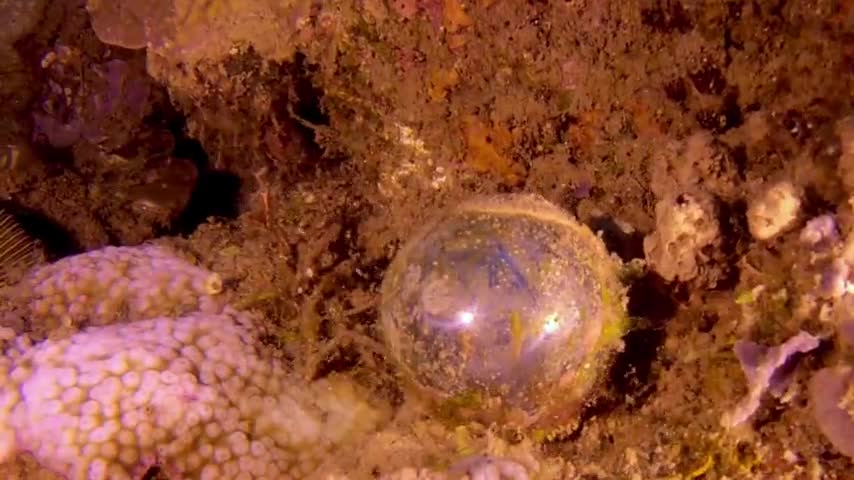Premium Only Content

Scuba diver thinks he's found trash but it's a bizarre living creature
Scuba diving is an exciting sport that takes the adventurous on a journey into a world that very few are fortunate enough to experience. The reefs below the waves are beautiful beyond description and the ocean life is fascinating. Each dive is different and there is more to learn than anyone could ever manage. This scuba diver has explored the waters in Belize, Mexico, Cayman Islands, Cuba, Galapagos Islands and Papua New Guinea. He has seen bizarre and wondrous creatures, but he has just found something unlike any other living organism that he has ever seen.
Initially drawn to a shiny sphere nestled in the coral and sponges in Kimbe Bay, Papua New Guinea, this diver believed he was about to pick up a piece of glass or other litter that had been dropped overboard. As he drifted closer, it looked like it could even be a metallic ball. It was completely spherical and uniform in shape, roughly the size of a large chicken egg. Although experienced scuba divers are well acquainted with the rule not to touch the reefs or sea life, the one exception is that removing litter from the ocean is advisable in most cases.
This diver drew closer and he was able to see the shine from his dive lights penetrating the outer surface, reflecting back at him from surfaces within the sphere. With a little imagination, he could now picture it as some alien object or well polished meteorite. As he reached for the strange object, he found the outside slightly springy. It was not metal or glass and he realized that felt like a peeled grape or even a huge eyeball. It was anchored to the coral and removing it would disturb the life around it.
Reluctant to touch it further, he left it where it was and brought his video footage back to the dive ship. A dive instructor and photography expert on board explained that this was actually a species of algae and that it grew so large that it is believed to be the largest single celled organism on the planet. Aptly named "bubble algae" or 'sailor's eyeball", they occupy most oceans throughout the world.
Scientists are keen to use these algae in research because they make it easy to study the migration of water soluble compounds across biological membranes. The ocean is full of fascinating and wonderous creatures. We are only beginning to understand our environment and the life forms that share our planet.
-
 DVR
DVR
Neil McCoy-Ward
56 minutes agoThey've Lost Their Minds...
1 -
 35:37
35:37
BonginoReport
4 hours agoCNN Defends Feds Who Put Tulsi on Terror Watch List (Ep.92) - 11/25/24
25.3K71 -
 LIVE
LIVE
G2G Gaming Channel
2 hours agoMonday Smite Fix! #RumbleTakeOver #RumbleGaming
352 watching -
 LIVE
LIVE
Jeff Ahern
1 hour agoMonday Madness with Jeff Ahern (6am Pacific)
574 watching -
 LIVE
LIVE
PudgeTV
13 hours ago🔵Vigilante Nights - Batman: Arkham Origins | Live Playthrough Pt. 5
116 watching -
 15:21
15:21
Degenerate Jay
16 hours ago $7.55 earnedThe Mystery Of Silent Hill 2's Strange Photos Has Finally Been Solved
36.4K9 -
 9:47
9:47
Cooking with Gruel
20 hours agoMastering Potato Gratin
20.7K27 -
 8:34
8:34
GBGunsRumble
14 hours agoGBGuns Range Report 24NOV24
15.4K4 -
 2:04:09
2:04:09
Nerdrotic
14 hours ago $87.98 earnedNew Peruvian Megalithic Site Discovery w/ Michael Collins | Forbidden Frontier #083
184K22 -
 6:40:53
6:40:53
Fresh and Fit
15 hours agoMyron TRIGGERED Rubi Rose, And Debating Cry Baby Blax On X Spaces!
180K129